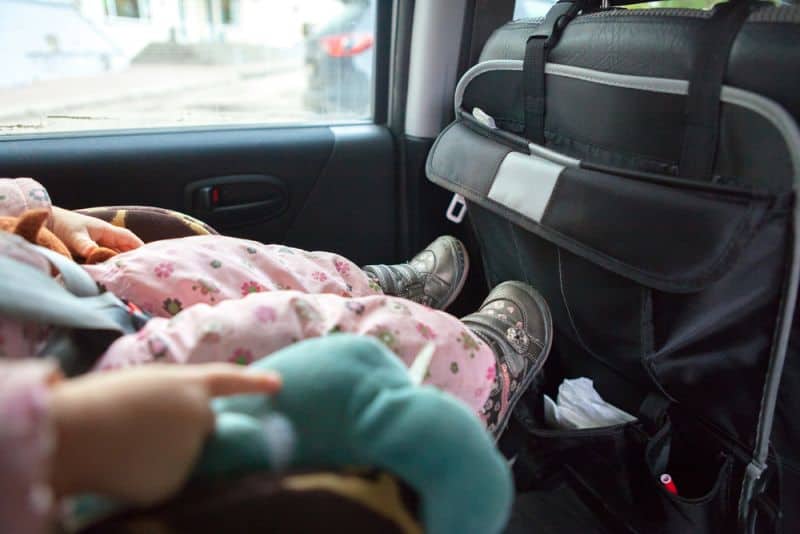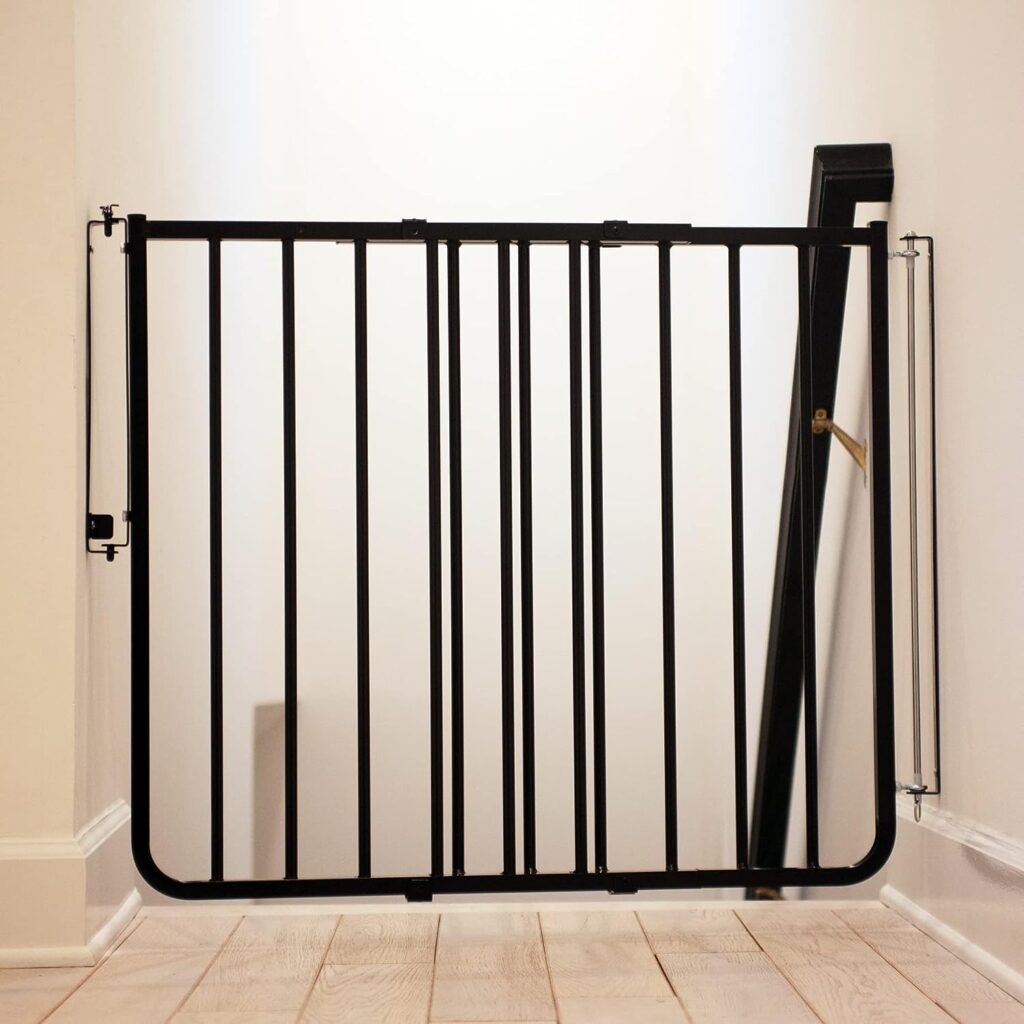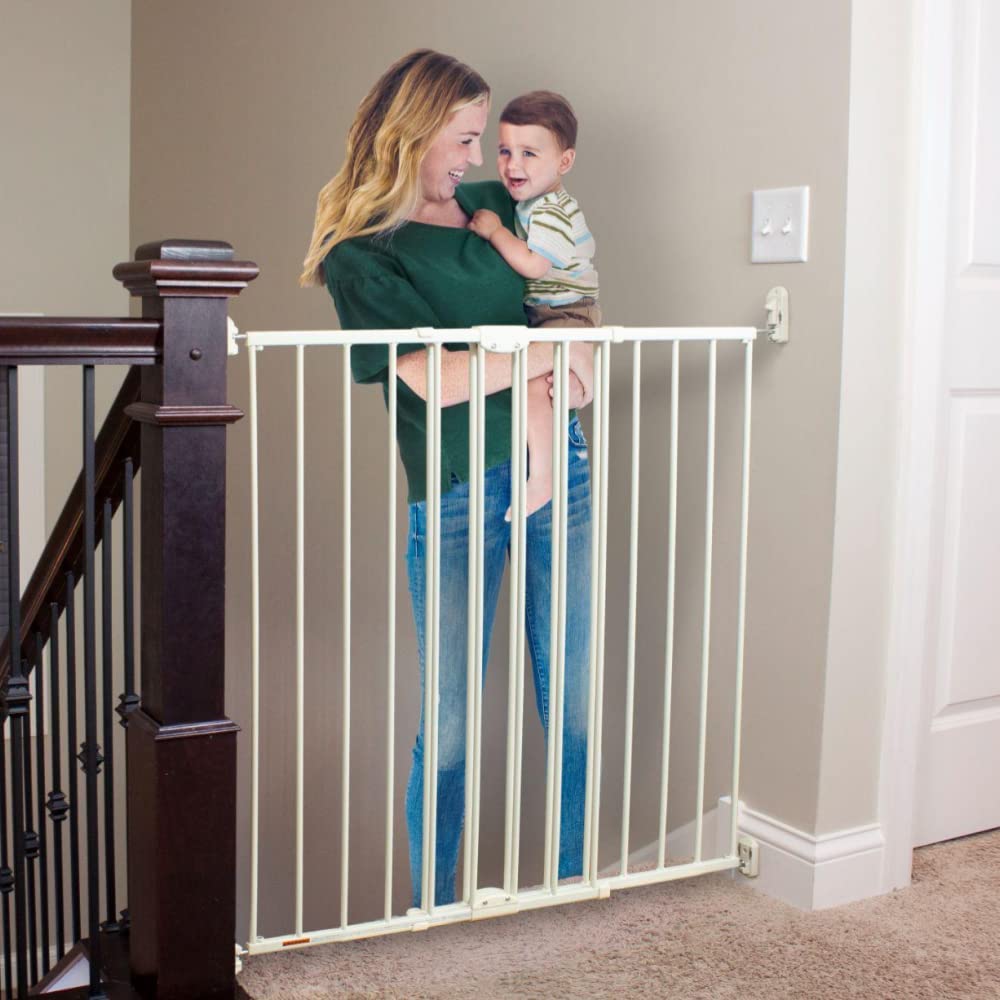
Don’t panic!
If you are like most parents, you want to protect your precious cargo in the best way you can.
That means that you might be concerned if you have heard of toxic materials being used in the car seat manufacturing process.
We understand those fears and want to give you a balanced perspective.
What Toxic Chemicals Might Be Used and Why?
Car seat companies are required to make sure that the materials that are used in their seats meet federal guidelines for crash safety and flammability standards.
For this reason, many manufacturers use flame retardant chemicals to prevent the seat from easily catching fire in the event of a crash.At surface level, this seems smart, right?
No one wants their child’s car seat to engulf with flames if they are involved in an accident. And as it turns out, the cheapest way to protect against this is to incorporate chemical additives into the fabric, foam, and other parts of the car seat.
Some of the types of toxic substances that are commonly applied to car seats are bromine, chlorine, phosphorus, antimony trioxide, and heavy metals, such as lead.
These are all commonly known to be dangerous chemicals, but alas, they are allowed to be used because they are all either approved flame retardants or components used to enhance their effectiveness.
What are the Risks of Flame Retardants in Car Seats?
The main concern with these chemical concoctions is that they emit toxic gasses. These in turn potentially pose a hazard to the health of our children. Some of the flame retardants are carcinogens and may increase cancer risks. Others disrupt hormones and may contribute to long term effects such as reproduction issues, obesity, developmental problems, and immune response.
Exposure to car seat chemicals is a real concern to many parents and rightly so. We need to be informed and aware of all potential risks to our children and have a voice in regulations that make car seats safer for all.
But of course, in the whole scheme of things, we must always consider the benefits vs. risks of what is available to us in the meantime.
So are Flame Retardants Necessary Evils?
Yes and no.
The truth of the matter is that most car seats on the market right now do have at least some of the chemicals that we have discussed here.
To what extent they are affecting children’s health is an ongoing discussion and matter of concern to many. But one thing we know is that child restraint systems are imperative for protecting kids in crash scenarios.
What this means is, NO MATTER WHAT, ALWAYS USE A PROPERLY INSTALLED CAR SEAT, regardless of any toxicity concerns, as there is no question that car seats are essential for protecting children during a car accident.
Whether car seats should have fire retardant additives or not, either because of their hazardous nature or their effectiveness and necessity (which is another controversy altogether), is an important conversation that car seat manufacturers, governmental agencies, and concerned parents and caretakers need to continue to explore, study, and take action on.
How Can I Reduce My Child’s Exposure to These Toxic Chemicals?
Thankfully, there are a couple of ways to decrease your child’s risks in some circumstances.
First of all, there are many car seat manufacturer’s who have heard the cries for non-toxic or less-toxic car seats.
So yes, there are options available on the market for concerned parents. Non-toxic car seats are generally made of certain materials that naturally resist flames, such as wool and EPP foam. Companies who make non-toxic (or less toxic) car seats usually market this aspect heavily, so look for these statements when researching what to buy.
But be aware that these types of car seats are well-known for being more expensive than conventional car seats, so keep that in mind. Remember that chemical fire retardants are cheaper to use than the alternatives.
Secondly, if you can’t afford a non-toxic car seat, the next best thing is to simply limit the amount of time that your child spends traveling in a vehicle. Of course, this is not always possible, but if it is an option, then consider it.
If nothing else, limit car seat time or reduce it to a minimum by promptly removing your child when you reach your destination. This means that even if your child is napping, take them out of the car seat and transfer them to a separate stroller, a carrier, or their bed (if home). Opt of a travel system that uses an infant carrier car seat in a stroller frame.
Please Note:Regardless of toxic exposure, infants should never be left to nap in their car seat once it is removed from the vehicle and taken indoors. This is because a car seat that is sat on a floor, table, couch, or other surface is not going to be properly angled, which can cause a baby’s head to tip forward leading to “positional asphyxiation,” which is basically suffocation due to position.
So to RECAP:
Toxic car seats are potentially a concern and if there is a reasonable way to reduce your child’s exposure to any hazardous chemicals then, by all means, do so!
However, never let those fears cause you to forego the use of a car seat.
If you currently own a car seat with fire retardants, do not discontinue its use, unless you are in a position to replace it with a non-toxic one.
A properly installed car seat (regardless of toxicity concerns) is a mandatory safety device and is your #1 defense against serious injury or death to your child in the event of a car crash and other health concerns must take “a back seat” if the two risks (no car seat vs toxic car seat) are compared side-by-side.








